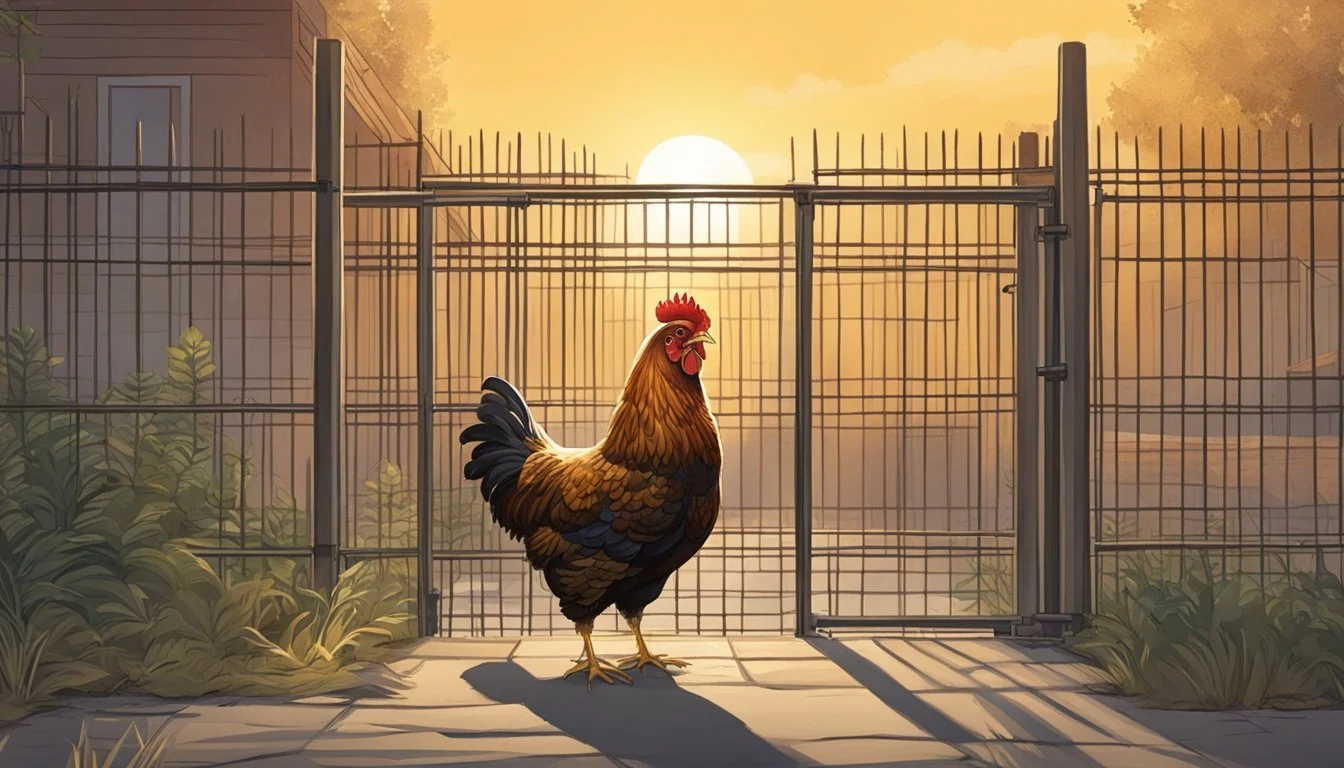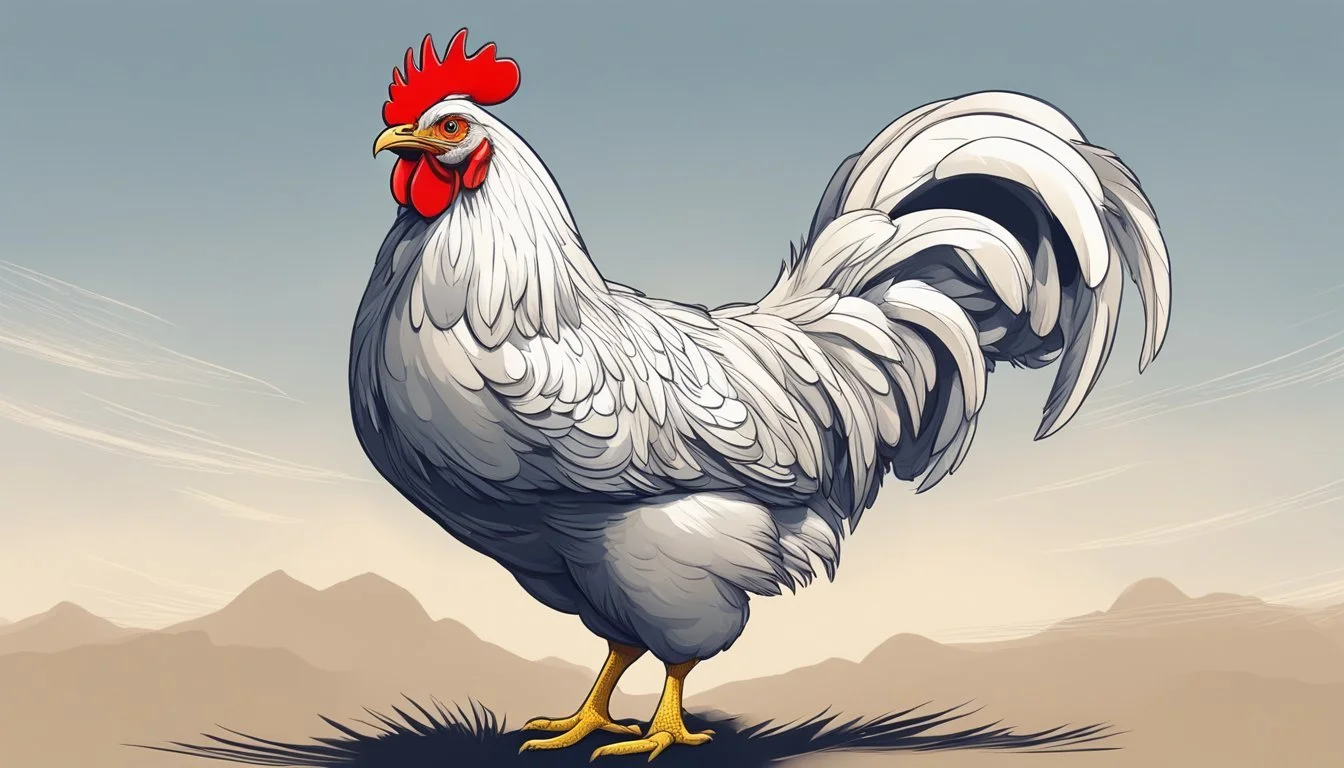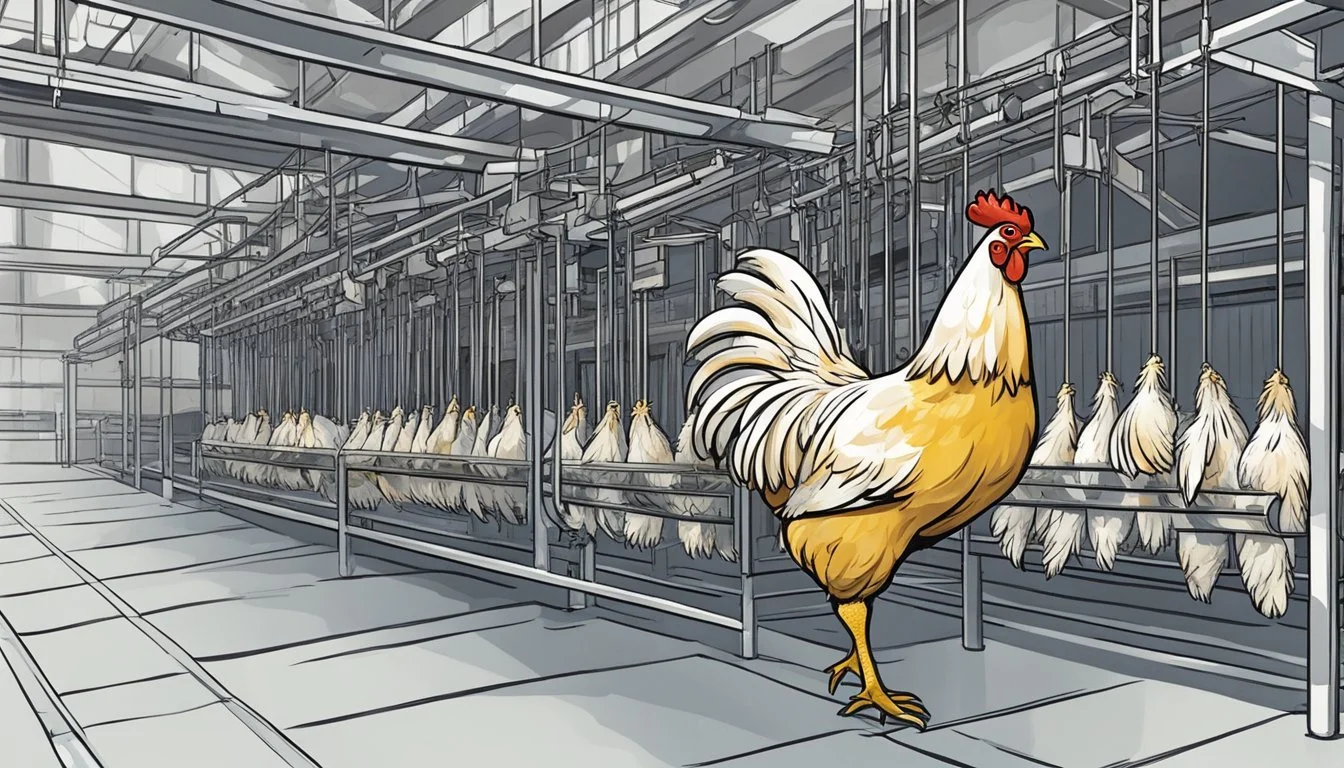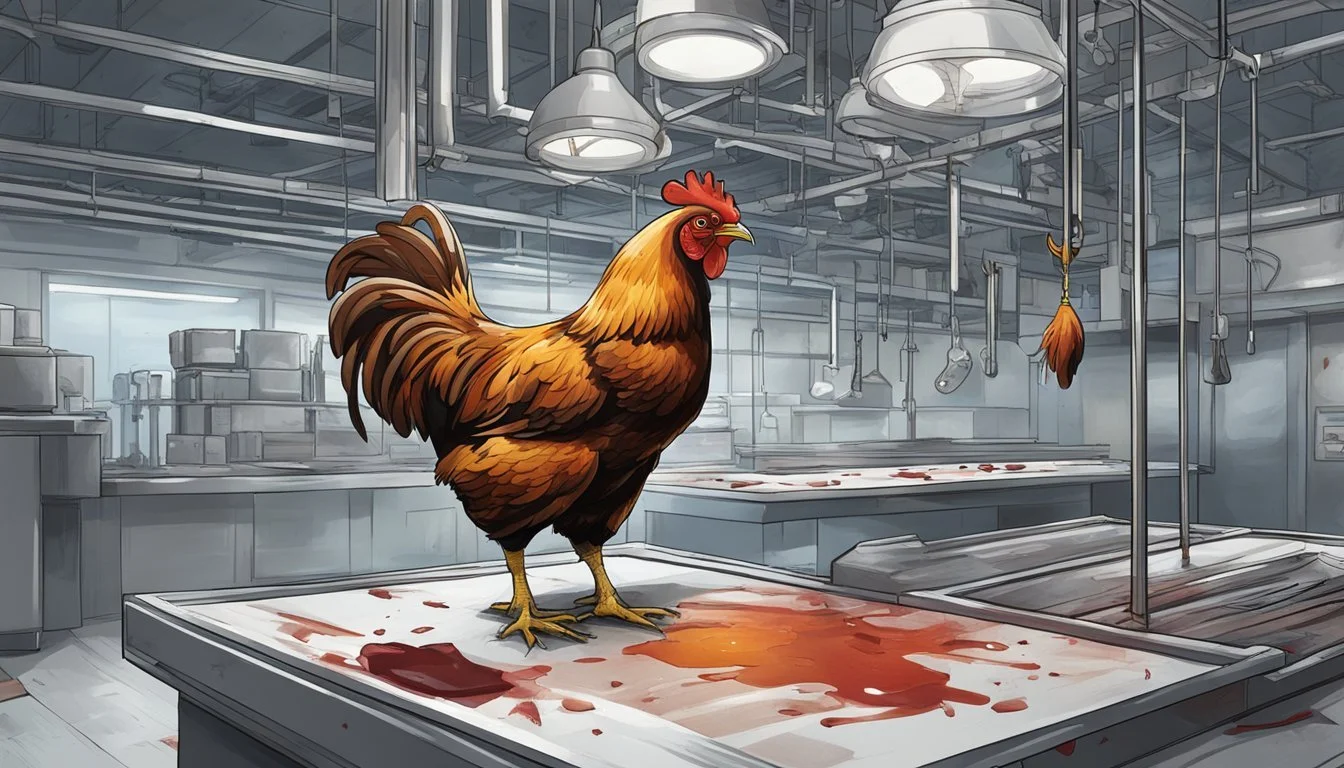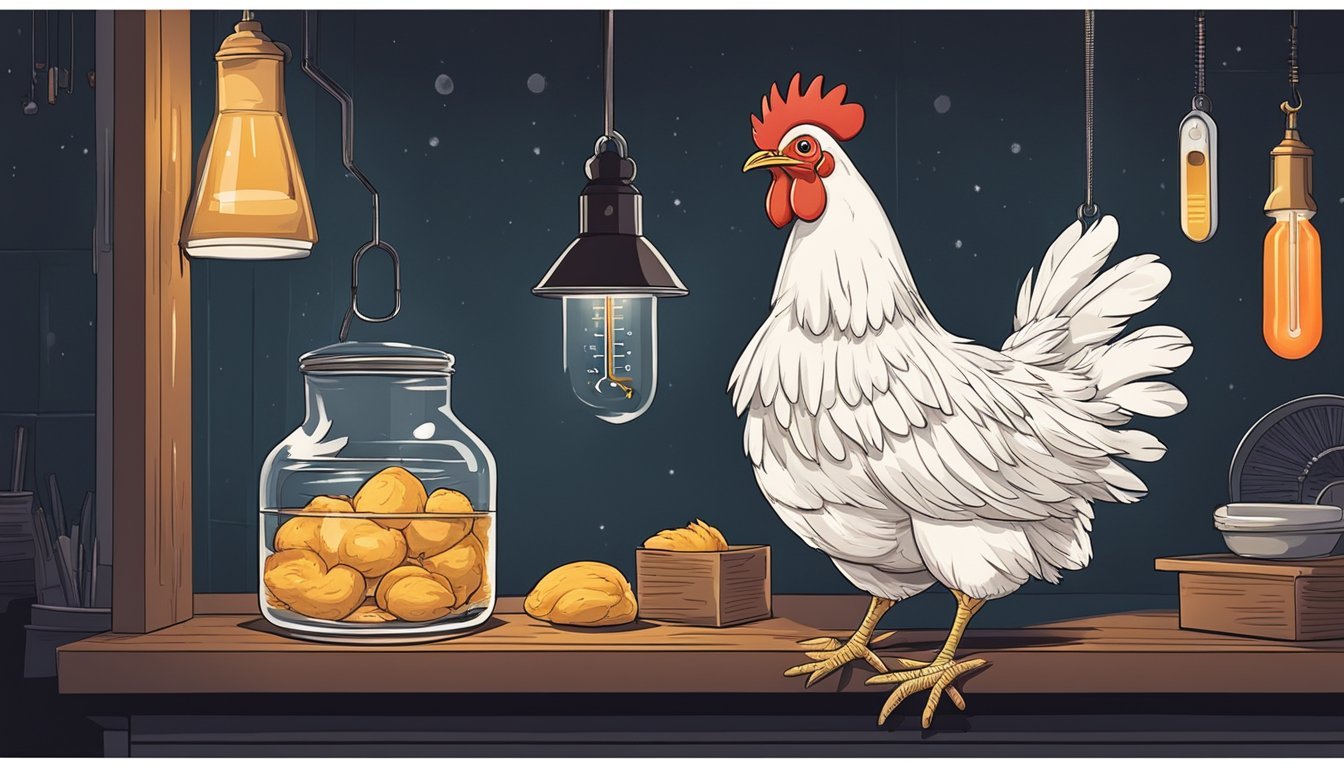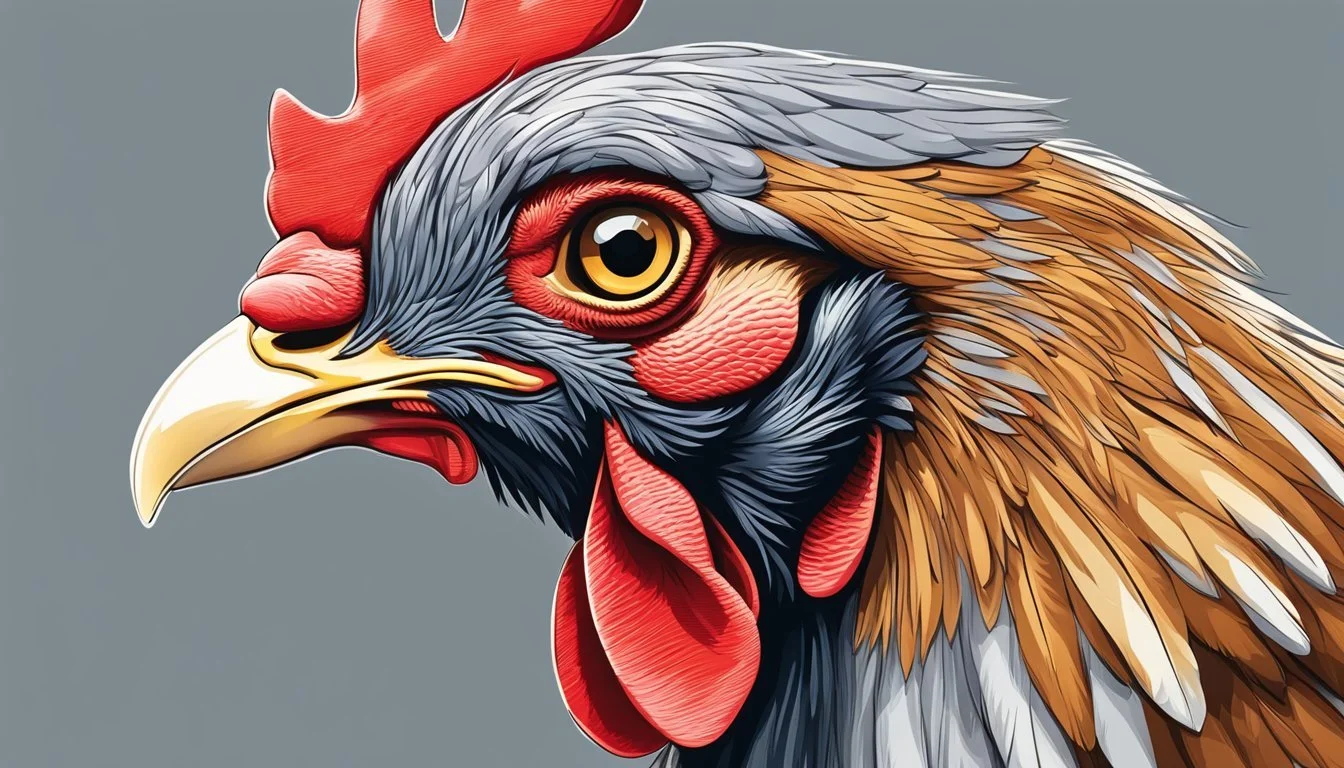How Do I Know When a Chicken is Ready for Slaughter?
Signs to Look For
Determining the right time to slaughter chickens is a crucial aspect of raising poultry for meat. The readiness for slaughter largely depends on the breed and the purpose of the chicken, whether it's being raised for tender broiler meat or for the more flavorful meat of a mature hen. Generally, broiler chickens are considered ready for slaughter at about 6 weeks of age, but they can be kept longer if a heavier weight is desired. On the other hand, laying hens are often slaughtered after they've decreased egg production, which could be around 18 months or older, although some farmers choose to keep them for longer.
Processing chickens at home whether for personal consumption or small-scale farming, involves a step-by-step procedure that ensures the meat is safe to consume. Essential steps include humane slaughtering methods, proper scalding and plucking, evisceration, and chilling the carcass to prevent bacterial growth. The tools and environment used during processing are equally important; clean, sanitized equipment and surfaces help maintain food safety standards. It's important to approach chicken processing with due diligence to both animal welfare and hygiene to produce quality meat suitable for consumption.
Determining the Right Age
Choosing the appropriate time to slaughter a chicken is pivotal for meat quality. Factors such as breed, weight, and physical maturity play crucial roles in this decision.
Breed-Specific Growth Rates
Different chicken breeds reach slaughter readiness at varying ages. Broiler chickens, like the Cornish Cross, are typically ready for slaughter at just 5 to 8 weeks due to their rapid growth rate. In contrast, heritage breeds, which grow more slowly, may take longer to reach the desired size. For instance, the esteemed Bresse chickens are commonly slaughtered at around 16 to 20 weeks, as they require time to develop their unique flavor and texture.
Weight and Size Considerations
The target weight for slaughtering chickens also depends on their breed. A Cornish Cross broiler, for example, should generally reach a weight of around 4-5 pounds before slaughter. It's essential for farmers to closely monitor their chickens' weight and size, as these are straightforward indicators of whether the birds are ready for processing.
Physical Maturity Indicators
Physical signs of maturity are important to note, especially for breeds like the Orpington, which may take longer to mature than production breeds. A chicken that has reached physical maturity will exhibit a broad breast, full body, and the beginning of fat deposition, which are indicators that the bird has accumulated enough muscle mass to provide a good yield of meat.
Preparing for Slaughter
Before beginning the process of slaughtering chickens, it is crucial to have all necessary equipment ready and to understand the safety protocols to minimize risks to both the butcher and the animal.
Equipment and Workspace Setup
One must ensure the workspace is clean and organized. The environment should be spacious enough to move around comfortably and easy to sanitize. The following equipment is essential:
Killing cone: Secures the chicken during the process.
Sharp knives: Necessary for precise cuts.
Scalding tank: Filled with hot water at specific temperatures for feather loosening.
Feather plucker: Machines can speed up the plucking process, if available.
Table: A sturdy, stainless steel surface is ideal for butchering chickens.
Buckets: Separate containers for offal and feathers to maintain a clean area.
Ice water bath: Used to chill the carcass post-processing.
Thermometer: Crucial to ensure water is at the correct temperature for scalding and that the chilled carcass reaches safe temperatures.
Ensure that each piece of equipment is sanitized and ready for use.
Health and Safety Measures
Health and safety are paramount. The butcher should wear protective clothing, including aprons, gloves, and slip-resistant footwear. Here are key practices to follow:
Proper handling: Learn to handle live chickens calmly to reduce stress on the animals.
Regular washing: Hands and tools should be periodically washed to prevent cross-contamination.
Safety procedures: Establish protocols in case of an accident involving knives or other equipment.
Waste disposal: Have a system in place for proper disposal of feathers, offal, and other waste to uphold a sanitary environment.
Cooling carcasses quickly: Place slaughtered chickens in an ice water bath to rapidly lower body temperature and inhibit bacterial growth.
Adherence to these measures will ensure a successful and humane slaughter process.
Slaughtering Process
The slaughtering process is a crucial phase in poultry farming, where precision and humane methods are imperative. It involves several key steps: capturing the chickens, utilizing humane methods to kill, and proper bleeding out to ensure the quality of meat.
Catching and Containing Chickens
Before the actual process of slaughtering begins, chickens must be caught and contained. This should be done gently to minimize stress on the birds. Once caught, placing them in a holding area or a killing cone immobilizes the chicken and prepares them for humane slaughter. It is important to restrain the chicken adequately to avoid injury to both the bird and the processor.
Humane Killing Methods
To humanely slaughter the chicken, it is recommended to use methods that are swift and minimize suffering. A common and humane technique involves making a precise cut through the neck, severing major blood vessels quickly. Another method is to stun the chicken before slaughtering, which renders them unconscious and insensible to pain.
Bleeding out
After the chicken has been killed, it is essential to let it bleed out completely. Proper bleeding, which involves hanging the chicken upside down, ensures that the blood does not affect the quality of the meat. This process also allows for easier scalding and feather removal later on. It is important that the blood is allowed to drain thoroughly, which can be facilitated by a clean butcher knife cut.
Each step in the slaughtering process is critical to ensure that the chicken's meat is safe for consumption and that the slaughtering is carried out in a respectful and humane manner.
Post-Slaughter Processing
Once a chicken is slaughtered, effective post-slaughter processing is crucial for ensuring the meat is safe to consume and prepared to the highest standards. The steps involved are intricate and require attention to detail to preserve the quality of the meat.
Scalding and Plucking
Scalding is an essential step that loosens the feathers making plucking easier. Chickens are immersed in hot water, typically between 140°F and 160°F, for around 30 to 90 seconds. Following this, they undergo plucking, which is the removal of all the feathers. This includes the removal of pin feathers, which can be more challenging to dislodge.
Gutting and Evisceration
Gutting and evisceration involve the removal of the chicken's internal organs. It's a delicate process that entails making incisions near the bird's vent and carefully pulling out the entrails to avoid contamination of the carcass with intestinal bacteria. The goal is to leave the body cavity clean and to remove any residue that could spoil the meat.
Carving and Portioning
The final steps in post-slaughter processing are carving and portioning. The chicken is divided into standardized cuts: drumsticks, thighs, wings, and breasts. During this phase, the precision of the cuts is important to ensure uniform cooking times and presentation. If dealing with backyard processing, the division may be less standardized, but still, the aim is to separate the chicken into practical portions. The skin and foot can be removed or left according to preference.
With these steps, chickens are transformed from their whole form into a state ready for cooking or freezing. The processes described significantly influence the final quality of poultry products that reach the consumer's table.
Storing and Preserving Meat
When it comes to preserving chicken meat after slaughter, the two critical steps involve proper chilling and washing to ensure safety, and efficient packing and freezing to maintain quality.
Chilling and Washing
After slaughter, chicken must be immediately chilled to inhibit bacterial growth. The carcass should be placed in a container of icy water to lower its temperature rapidly. A minimum of one hour is recommended to ensure the meat temperature falls below 40 degrees Fahrenheit. They should wash the chicken thoroughly to remove any remaining blood or debris, facilitating a clean product for storage or immediate consumption.
Packing and Freezing
For long-term storage, packing the chicken correctly before freezing is crucial. They should pat the chicken dry before wrapping it in airtight packaging to prevent freezer burn, which can adversely affect flavor and texture. It's advisable to label the packaging with the slaughter date to keep track of freshness. Chicken can be safely stored in a freezer for up to nine months, ensuring they consume it within that time frame for optimal quality. It's important they keep raw chicken separate from other foods to avoid cross-contamination.
Culinary Preparation
Once a chicken is deemed ready for slaughter, culinary preparation ensures that the bird's transition from coop to table captures the full potential of its flavor and texture. Precise cooking techniques and appropriate recipes play a crucial role in honoring the quality of the bird.
Cooking Techniques
Roaster Chickens: Birds such as the plump roaster chickens or Cornish crosses, known for their tender meat, benefit from roasting to highlight their natural succulence. One should cook them in a preheated oven to an internal temperature of 165°F, ensuring that the meat is safely cooked yet remains moist.
Crock Pot: For those who prefer a hands-off approach, cooking in a crock pot is ideal, especially for foraging types like heirloom breeds. The slow cooking process brings out the flavors and tenderness of the chicken, perfect for the busy heirloom gardener or one deeply involved in raising meat birds.
Poultry Processing: Proper handling during poultry processing includes a thorough clean to minimize the risk of bacterial contamination. The chickens should be scalded and plucked effectively before being used in any recipes.
Recipes and Uses
Foraging Breeds: Chickens raised on a diet of foraging have a distinctive taste that can be enhanced through the use of herbs and spices. Some classic recipes include herbed chicken casserole or chicken pot pie (What wine goes well with chicken pot pie?).
Raising Meat: Individuals who invest in raising meat birds should consider recipes that accentuate the particular texture of the meat such as chicken schnitzel or fried chicken, where the crispy exterior contrasts the juicy interior.
It is essential to align cooking techniques with the chicken's breed and upbringing—whether it's the richly flavored heirloom gardener's bird or a classic Cornish cross—to maximize the culinary experience.
Best Practices and Tips
When considering the slaughter of backyard chickens, there are crucial steps and considerations that ensure a humane and efficient process. Understanding chicken behavior and mastering effective butchering techniques are key to successfully preparing chickens for slaughter.
Understanding Chicken Behavior
Chickens ready for slaughter typically exhibit signs of maturity, such as a full set of feathers and a cessation in the production of fresh eggs. Observing their behavior closely is essential. Chickens that have ample space and have exhibited natural foraging behavior are likely to have developed well, indicating physical readiness for butchering.
Effective Butchering Techniques
Butchering chickens requires a well-planned approach to ensure a clean and humane process. Tools such as an automatic plucker, sharp knives, and a sturdy cutting board are essential. The butcher should start by calmly and securely holding the chicken to minimize stress. A swift, respectful slaughter method should be followed by efficiently eviscerating the bird, during which care must be taken when removing internal organs like the gizzards and ensuring the cloaca is intact to avoid contamination. Afterward, proper chilling is crucial to prevent bacterial growth and maintain meat quality.
Regulatory and Ethical Considerations
Before proceeding to slaughter chickens, it is crucial to understand the regulatory requirements and ethical implications of the process. These considerations ensure that the health and welfare of the poultry are respected while adhering to safety standards that protect both the animals and the environment.
Local Regulations
Local regulations governing poultry slaughter may vary significantly by region. It is important to consult local agricultural or food safety authorities to obtain the necessary permits and to ensure compliance with zoning laws, health codes, and slaughtering protocols. For example, the Food Safety and Inspection Service provides guidelines around safe handling and processing of poultry to minimize the risk of bacterial growth and ensure safety for consumers.
Animal Welfare
Ethical considerations around poultry slaughter revolve around the humane treatment of the animals. This includes methods of holding and transporting the birds, as well as employing slaughtering techniques that minimize stress and pain. Entities like the Humane Handling of Livestock and Poultry provide resources on good manufacturing processes and proper training to ensure that the welfare of the chickens is maintained during handling, leading up to, and including the point of slaughter.
It is imperative that anyone involved in the process is informed about proper handling techniques to avoid undue distress to the animals.
Slaughtering procedures should be performed efficiently to ensure quick and humane execution, thereby aligning with both ethical practices and regulatory standards.
Frequently Asked Questions
When is a chicken ready for slaughter?
Most chickens, like the popular Cornish Cross Broiler, are ready for slaughter at around 5 to 9 weeks of age. However, the exact time can depend on the breed and the desired size.
What signs indicate a chicken is mature enough for slaughtering?
Cross Br Chickens that are ready for slaughter typically reach their target weight and display full feather development. Look for lessened activity and a well-fleshed body.
How do I prepare chickens before the slaughter process?
Before slaughtering, withhold food to ensure the crop and esophagus are empty. This makes the process cleaner and reduces the risk of contamination. Water should be provided until the time of slaughter to keep the chicken hydrated.
What is the importance of feathers during processing?
Feathers need to be removed during processing. This is often done after scalding the chicken in hot water to loosen the feathers, making them easier to remove.
How is the trachea and crop handled during chicken slaughter?
During evisceration, the trachea and crop are carefully removed to prevent contamination of the carcass with contents from the digestive and respiratory tracts.
Is there a humane way to slaughter chickens?
Yes, it is important to follow humane methods of slaughter, which include rendering the chicken unconscious before bleeding it out. This ensures minimal distress for the animal.
Slaughter Component: Crop and Esophagus
Description: Empty before slaughter to minimize mess and contamination.
Slaughter Component: Feathers
Description: Must be removed post-slaughter, typically after scalding in hot water.
Slaughter Component: Trachea
Description: Carefully removed during evisceration to avoid contamination.
Slaughter Component: Humane Slaughter Practices
Description: Ensure the bird is unconscious before bleeding, to minimize suffering.

